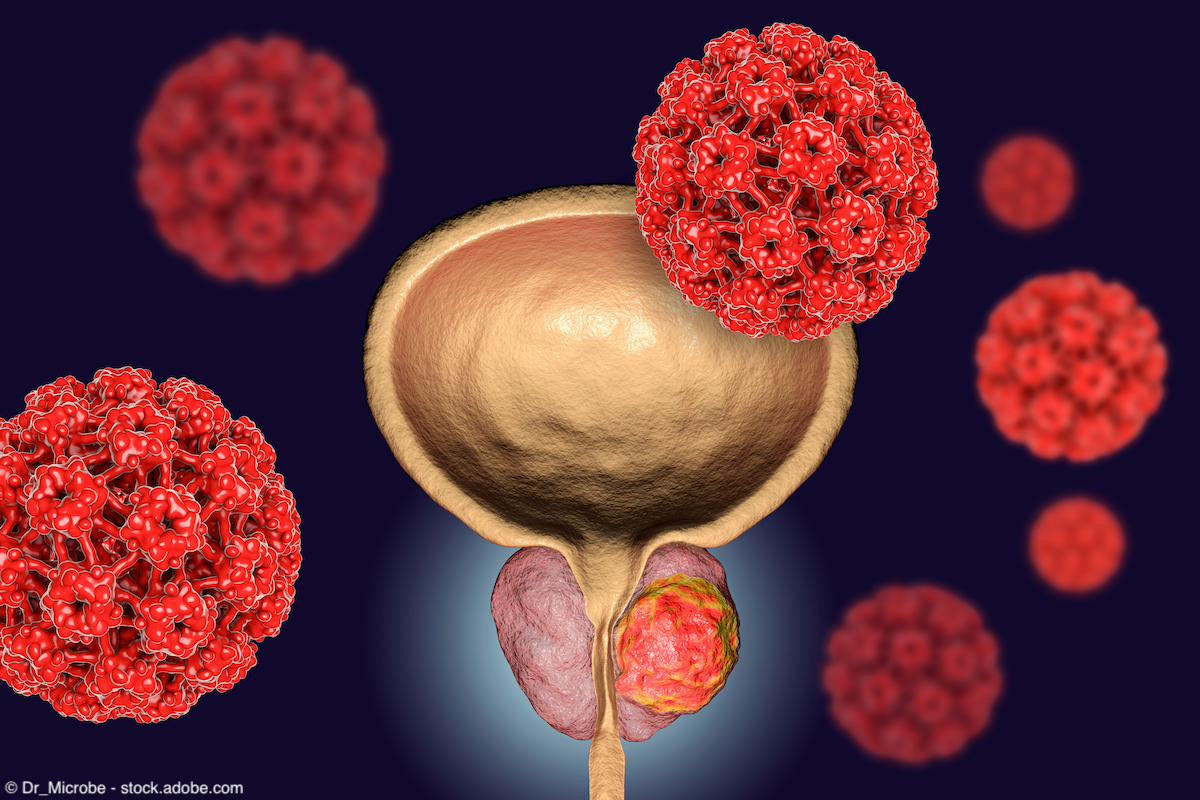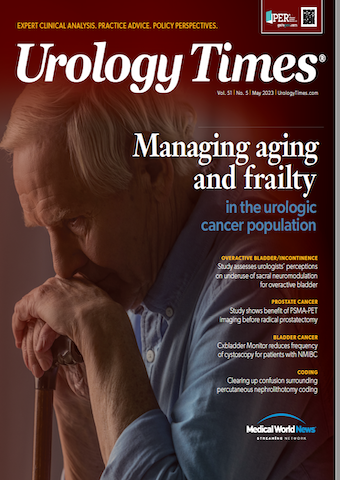Publication
Article
Urology Times Journal
Study shows benefit of PSMA-PET imaging before radical prostatectomy
Author(s):
Clinical guidelines currently do not recommend PSMA-PET imaging before radical prostatectomy.
Patients with non-metastatic prostate cancer staged with PSMA-PET imaging before radical prostatectomy are at lower risk of early recurrence compared with patients staged with conventional imaging alone, according to findings shared during the 2023 European Association of Urology Annual Congress.1
“PSMA-PET scan helps clinicians to improve preoperative risk stratification and the identification of men who might benefit most from treatments,” said Simone Scuderi, MD.

Explaining the rationale for the study, lead author Simone Scuderi, MD, San Raffaele Hospital, Milan, Italy, said, “PSMA-PET in prostate cancer staging is associated with higher accuracy for nodal and metastatic detection than conventional imaging; however, clinical guidelines still do not recommend PSMA-PET before radical prostatectomy.”
The multi-center analysis included 3978 patients with lymph node–negative, non-metastatic (N0M0) prostate cancer treated with radical prostatectomy with or without extended pelvic nodal dissection between 2010 and 2022.
The study included 2 groups of patients. Group 1 comprised 3518 men staged with conventional imaging identified in a single institution data set and group 2 comprised 460 patients staged with PSMA-PET imaging identified from a multi-institutional cohort.
Patients in the PSMA group also had a higher median preoperative PSA at 8.5 ng/mL vs 6.4 ng/mL in the conventional group. Patients in the PSMA group also had a higher Gleason Grade Group at biopsy, with 57% of patients having a Grade Group >3 compared with 11% in the conventional group.
Overall, 282 patients experienced early recurrence, which the study defined as, “PSA persistence (first post-operative PSA ≥0.1 ng/mL) or PSA ≥0.2 ng/mL within 1 year after radical prostatectomy.”
The rates of early biochemical recurrence were similar between the 2 groups at 12% for the PSMA group and 10% for the conventional group (P = .3).
Using multivariate logistic regression analysis, the investigators assessed the impact of preoperative imaging on early biochemical recurrence. According to Scuderi, the results showed that “Being staged with PSMA-PET was associated with a lower risk of early recurrence (Odds Ratio [OR], 0.61; P = .01) after accounting for PSA, clinical stage, and biopsy ISUP Grade Group.”
The investigators also conducted an analysis focusing on 273 men who had available data for both PSMA-PET and CT. In this group, the presence of positive PSMA-PET predicted early recurrence (OR, 4.34; P = .004); however, CT-scan did not predict early recurrence.
“PSMA-PET scan helps clinicians to improve preoperative risk stratification and the identification of men who might benefit most from treatments,” Scuderi said in his concluding remarks.
Reference
1. Scuderi SLA, Gandaglia G, Mazzone E, et al. The prognostic impact of preoperative PSMA-PET on early oncological outcomes in prostate cancer patients treated with radical prostatectomy: Results of a multi-center analysis. Presented at: 2023 European Association of Urology Annual Congress. March 10-13, 2023. Milan, Italy. Abstract A0248.



























